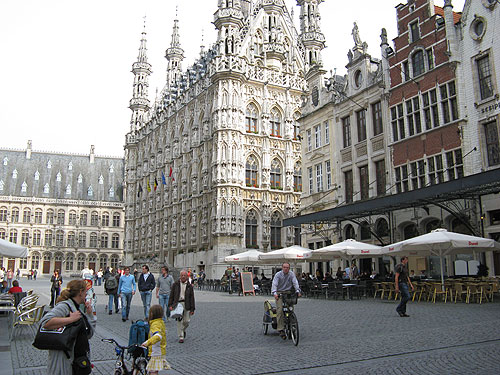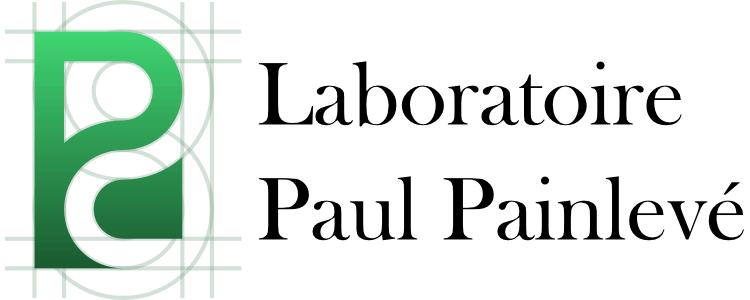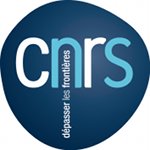11h-12h Christian Elsholtz (Graz)
The additive decomposability of sets
We give a survey of open and solved problems, and a survey of methods involved,
around the question whether certain sets of integers
(such as primes, squares etc.) be be written as a sumset, in a non-trivial way.
 Celestijnenlaan 200, "Moete"
14h-15h Kathrin Bringmann (Köln) Celestijnenlaan 200, "Moete"
14h-15h Kathrin Bringmann (Köln)
Meromorphic harmonic Maass forms.
Classical modular forms are holomorphic functions that are meromorphic at the cusps and satisfy nice modular symmetries. Harmonic Maass forms are real-analytic generalizations thereof in that instead of being holomorphic they are annihilated by the weight k Laplace operator. These functions generalize Maass waveforms, which are of weight 0 and decay in the cusps. Recently there has been an active interest in harmonic Maass forms, as their holomorphic parts (so-called mock modular forms) naturally occur in various areas of math- ematics and physics. The probably most famous example of mock modular forms are given by Ramanujan's mock theta function which he introduced in his last letter to Hardy shortly before he died.
In this talk I instead consider Maass forms which are also allowed to have poles in the upper half plane and give various applications of such functions including Hardy-Ramanujan type formulas for meromorphic modular forms. All this is joint work with Ben Kane.
15h-16h Wouter Castryck (Gent)
Computing zeta functions of tetragonal curves over finite fields
About 15 years ago Kiran Kedlaya described an algorithm for computing Hasse-Weil zeta functions of hyperelliptic curves over finite fields of small characteristic, using p-adic cohomology. Since then people have tried to make the method work for larger families of curves. Until recently, the largest family of curves for which Kedlaya-style algorithms were available is that of nondegenerate curves. The latter family consists of the trigonal curves, along with some other families that are usually lower-dimensional (in terms of moduli).
Last year Jan Tuitman described a method that both speeds up the known generalizations and potentially works for a much larger class of curves. One issue that he left open is the construction of a `good' lift of the input curve to characteristic zero. This is easy for nondegenerate curves, but hard in general. In this talk we will show how to address this problem for curves of genus five, which are generically not nondegenerate, and report on an implementation in Magma. Next we discuss how to adapt our construction to tetragonal curves of arbitrary genus. This is joint work (in progress) with Jan Tuitman.
 16h30-17h30 Immanuel Halupczok (Leeds)
16h30-17h30 Immanuel Halupczok (Leeds)
An (easier) p-adic version of the Kontsevich-Zagier conjecture
Kontsevich and Zagier conjectured: if two real integrals (of
semi-algebraic functions, over semi-algebraic sets) have the same value,
then "there is a good reason for it", i.e., the integrals can be
transformed into each other using some basic operations like change of
variables. This conjecture seems totally out of reach. However, I will
present and explain an analogous result in the p-adic numbers. This is joint
work with Raf Cluckers.
~~~~~~~~~~~~~~~~~~~~~~~~~~~~~~~~~~~~~~~~~~~~~~~~~~~~~~~~
19 h - Diner
|
Hoe te bereiken/ Pour arriver
Depuis une des trois gares principales de Bruxelles (Nord, Centrale ou Midi), prenez un train qui s'arrete à Leuven.
A la gare de Leuven, prenez le bus ligne 2 indiquant 'CAMPUS', qui roule tout les 10 minutes et qui prend 20 minutes. Descendez au dernier arret, qui est l'avenue 'Celestijnenlaan' 200.
Vanaf Brussel, neem de trein naar Leuven. In Leuven station neem bus 2 'CAMPUS' tot de eindhalte; dit is Celestijnenlaan 200.
Details









